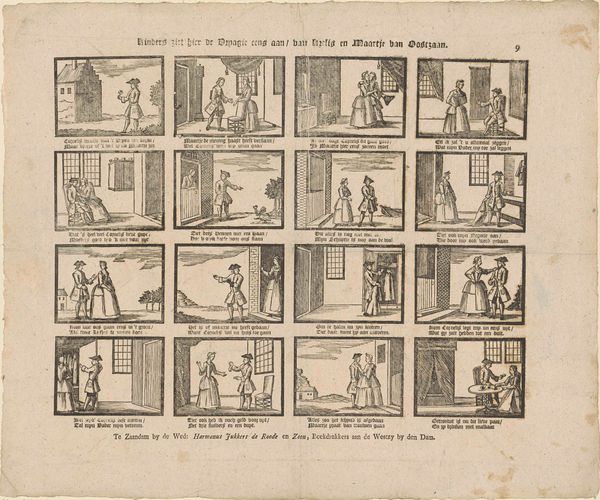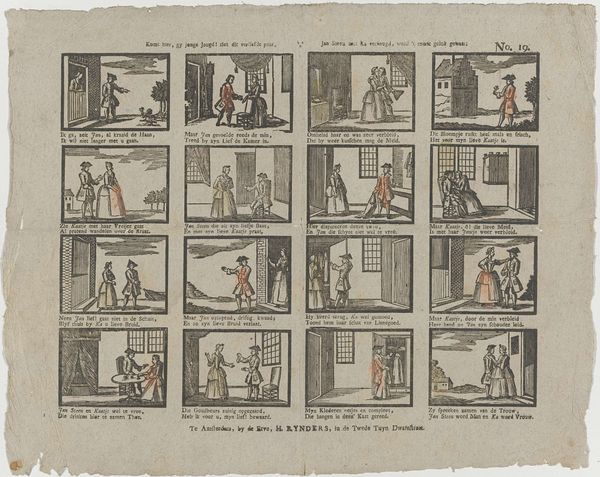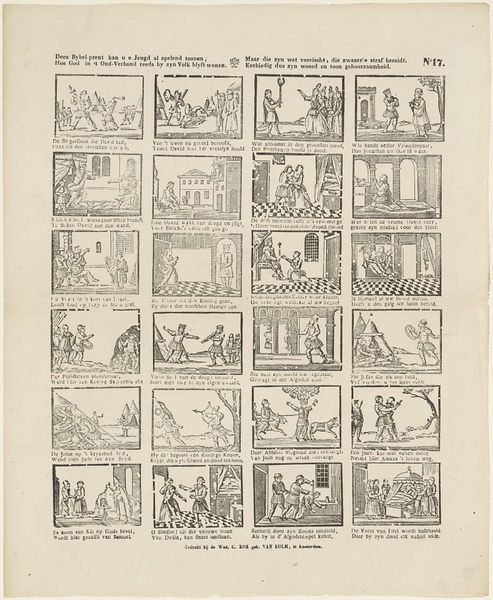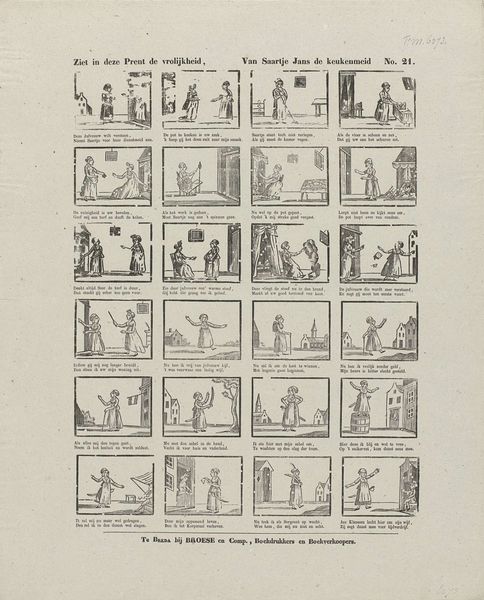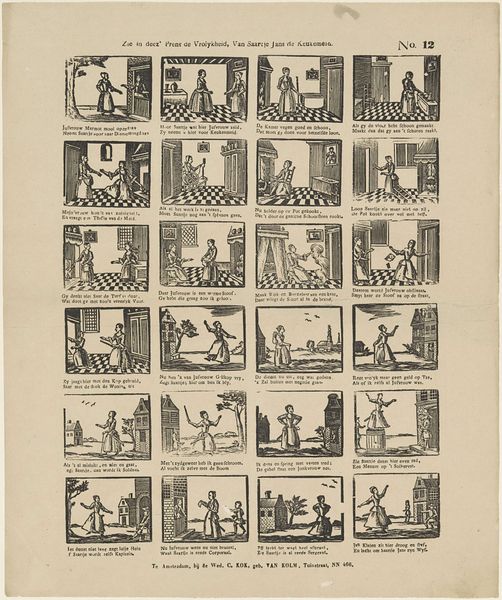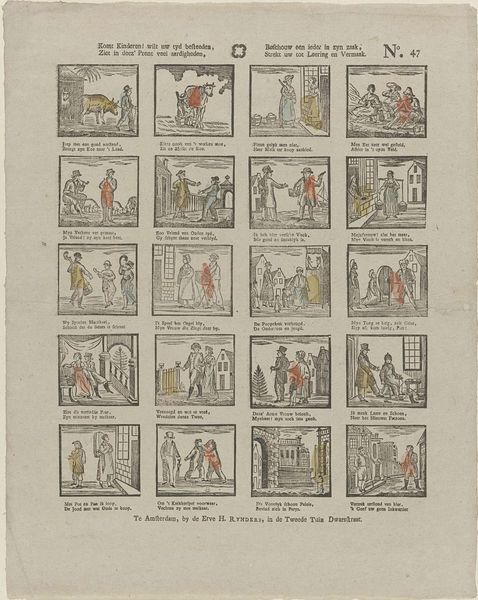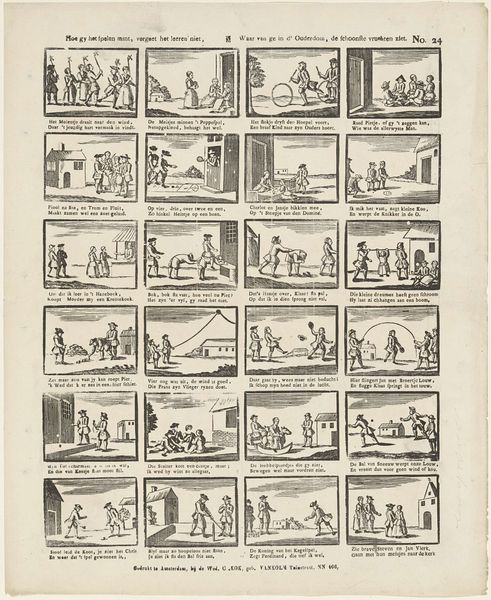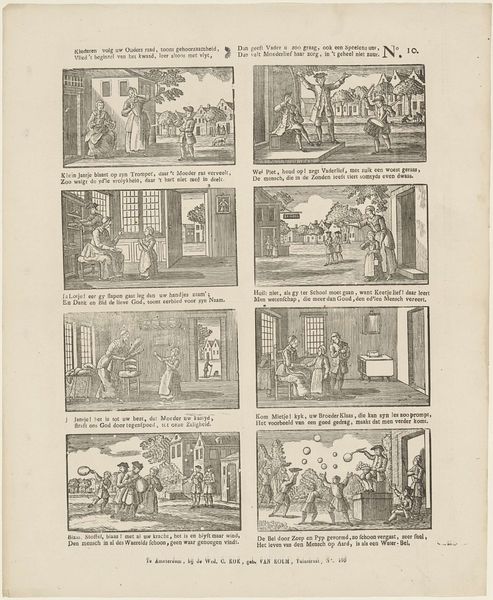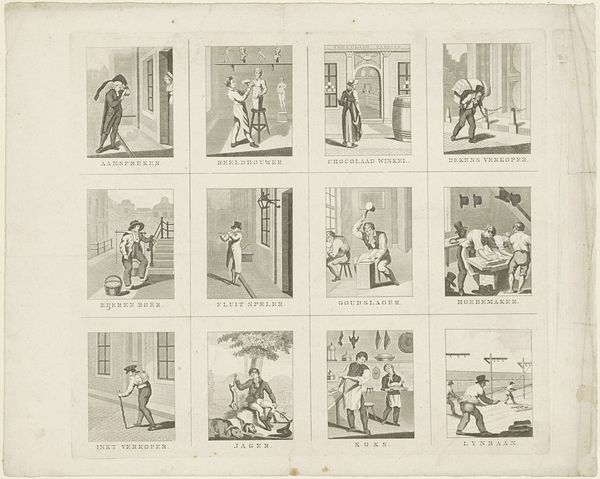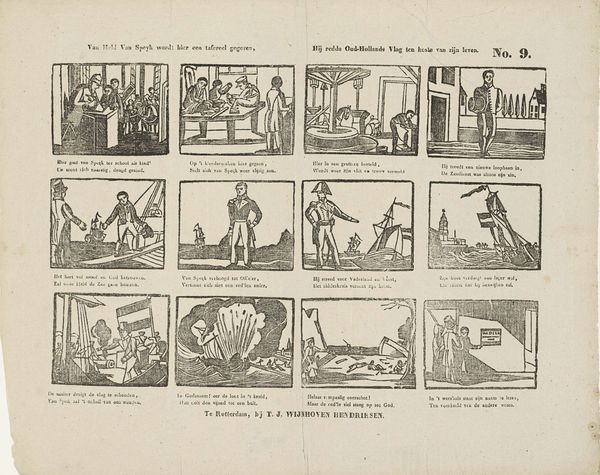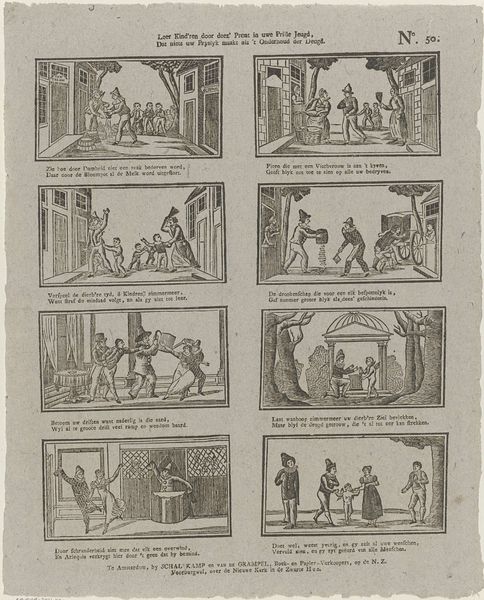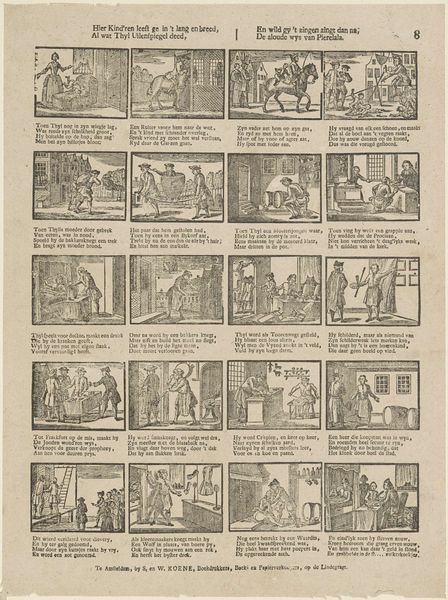
Komt hier, gy lieve jeugd! ziet dit verliefde paar, / Jan Steen met Ka verheugd, word 't zoetst geluk gewaar 1842 - 1866
0:00
0:00
print, engraving
#
narrative-art
#
dutch-golden-age
# print
#
old engraving style
#
comic
#
genre-painting
#
engraving
Dimensions: height 330 mm, width 396 mm
Copyright: Rijks Museum: Open Domain
Curator: Here we have a print titled "Komt hier, gy lieve jeugd! ziet dit verliefde paar, / Jan Steen met Ka verheugd, word 't zoetst geluk gewaar." The artist is Jacob Coldewijn, and its date falls between 1842 and 1866. It's an engraving. Editor: Immediately, the eye is drawn to the division of the whole. The artist creates almost a panelled cartoon displaying a romantic entanglement. It feels light, a little playful. Curator: Indeed. Coldewijn produced this engraving using an old engraving style and a narrative art format reminiscent of Dutch Golden Age genre-paintings. It shows sequential scenes, offering commentary on the relationships that we are all so keen to romanticise. Editor: Look at the lines. Thin, controlled, uniform, with all lines rendered consistently. The constraint that this lends to the forms is itself very expressive. Consider that linearity, contrasted with chiaroscuro, to render forms. It emphasizes graphic impact above all. The composition's repetitive layout drives home the feeling of something like comic panels, perhaps suggesting humour and storytelling? Curator: The textual elements, placed directly into each panel, emphasize narrative coherence. What makes this piece stand out, despite the lack of innovation in style or material, is its overt engagement with courtship as social theater. The gestures between characters, within interiors and landscapes, is of great interest. Editor: In this artwork, each micro-scene encapsulates moments. The visual language uses postures and small-scale sets to communicate a whole story without resorting to naturalistic techniques, achieving charm within the structure's rigidity. This really enhances the work’s playful simplicity, almost naivety. Curator: I agree. Coldewijn captures more than just faces; it’s the era’s sentiment around social relations, meticulously etched onto this printed medium to reveal Dutch courtship in serialized form. A kind of ancestor to the soap opera? Editor: Maybe! Ultimately, it serves as a fascinating window into a bygone era, elegantly compressed into a digestible format. Curator: It certainly does. Thank you for joining me on this journey.
Comments
No comments
Be the first to comment and join the conversation on the ultimate creative platform.
